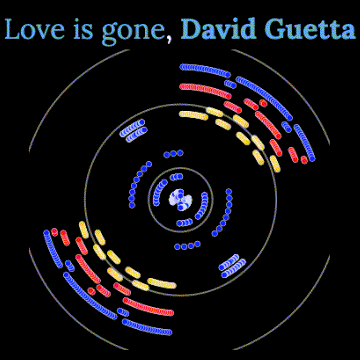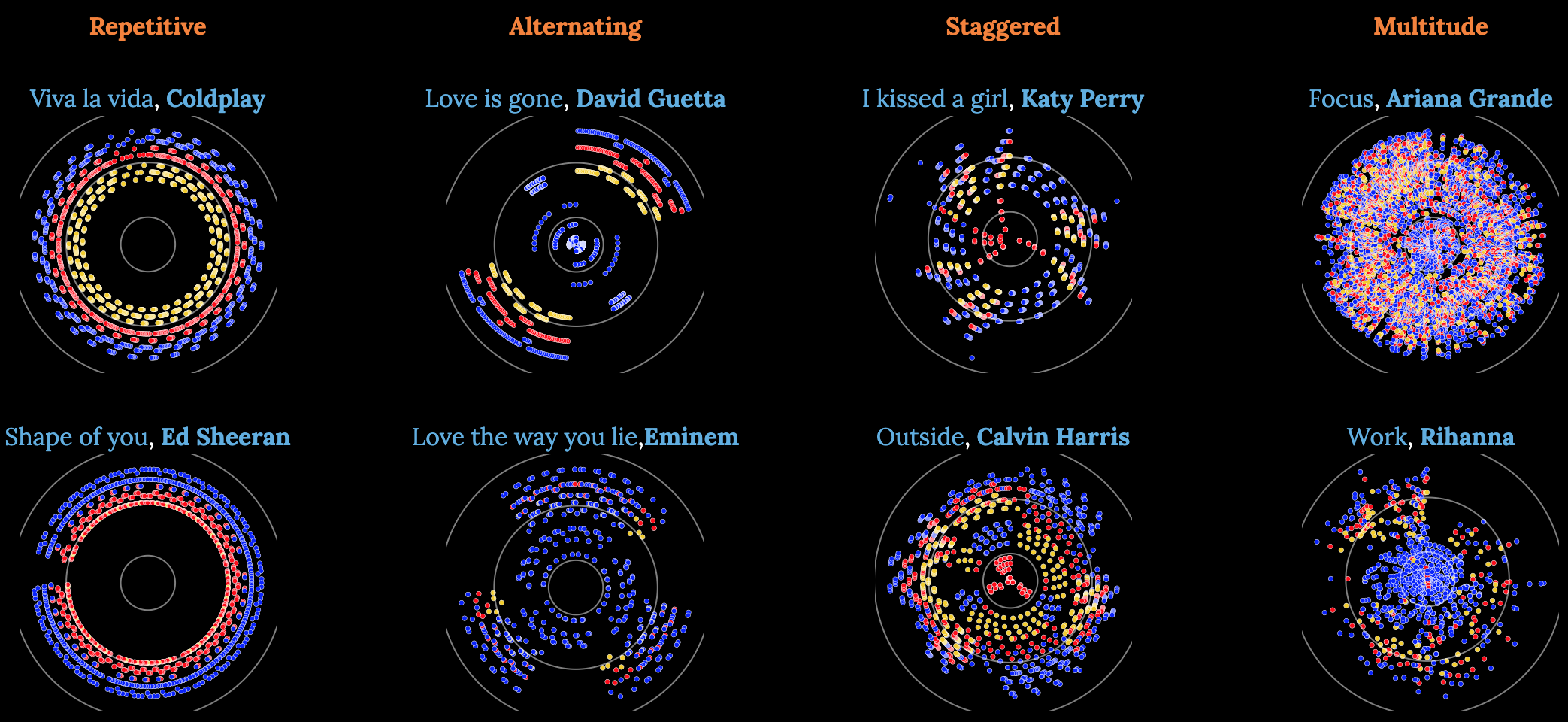We started this article with the question of How can we measure similarities in rhythm patterns of two songs ?. The article began by explaining what is rhythm, introducing a new method to visualize rhythm pattern in a song and also presenting a novel algorithm to compute how similar two songs are in terms of their rhythm.
The debate of explore vs exploit is a common theme across multiple domains of life. In terms of song composition, this translates to the question of whether an artist should exploit well known successful rhythm patterns of past and use them in new songs ? Or should the artist explore using entirely new rhythm patterns while composing new songs ? The right answer is like with most things lies in finding the middle ground between the two. Research has shown that people tend to like certain kinds of rhythm patterns more than others. In this regard, it is natural for artists to exploit such popular rhythm patterns over and over. However in order to stand apart in an ultra-competitive world, an artist should also be coming up with new and unique rhythm patterns. This will avoid the artist from being stereotyped into being associated with producing only certain kinds of songs.
As fans of music, we have all had plenty of times when we strongly felt that a song we are listening to sounds eerily similar to another song which we have listened to in the past. However such moments are often closely followed by the feeling of frustration of not being able to pin point which other song it exactly is. The new methodology of finding similarities in rhythm patterns introduced in this article helps us determine precisely that. By assigning rhythm similarity scores to each song pairs, we determined the rhythmically most unique songs, pairs of songs with most similar rhythms. Further by extending the same concept, we assigned uniqueness scores to artists based on how unqiue their songs are.
We can further build on this theory to inspect if using certain kinds of rhythm patterns in songs guarantee any sort of success to the song. Perhaps that question is for another post. As a data scientist, this was a fun exercise to explore rhythm similarities and assign quantitative scores to songs. However we all know that there is so much more to music, it transcends all the math behind it and is often a source of so much joy to listeners. Perhaps in that sense, we should let it be just that and not make it quantitative. Still the next time you listen to a song, observe closely, you may have heard that rhythm before !

